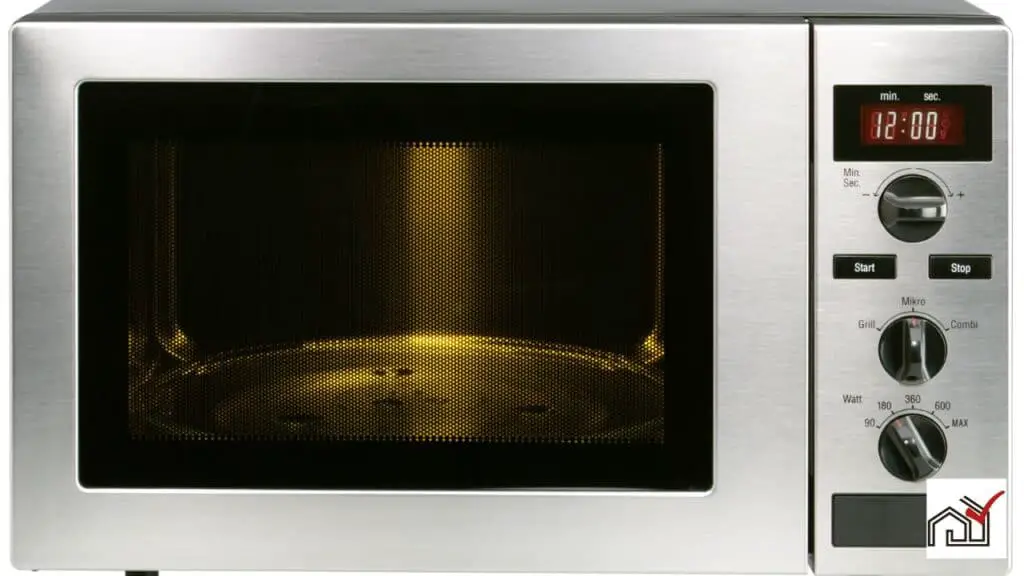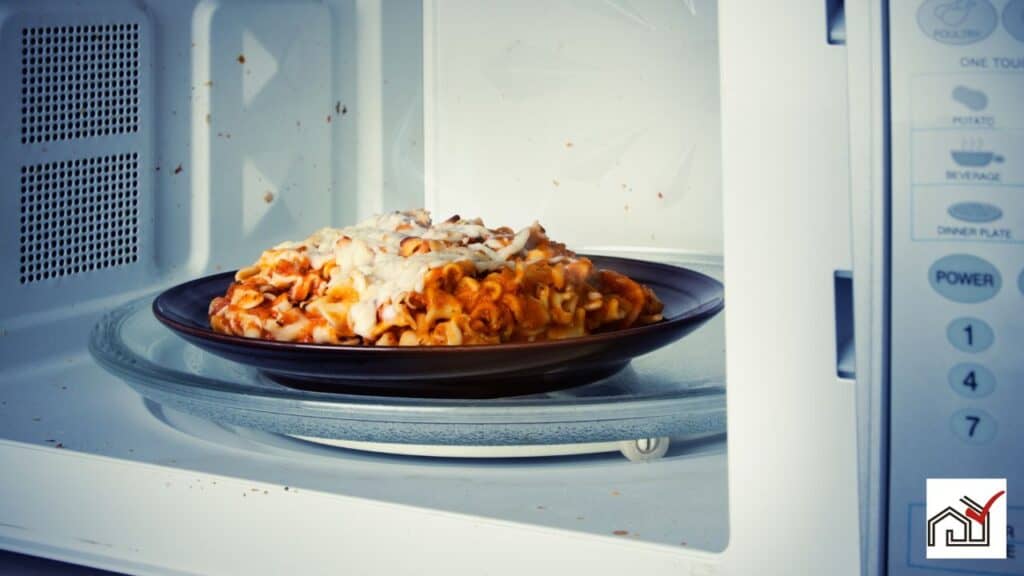You might have heard about the importance of cleaning your microwave filters and tried to look for one in your countertop microwave but couldn’t spot it.
So, do they actually have filters?
Countertop Microwaves and Filters
Countertop microwaves typically don’t have filters in them. Instead, this feature is strictly used with models that have vent systems, which are mostly just over-the-range microwaves built into top cabinets.
Let’s go over why filters have no place in countertop microwaves and how you can tell if your appliance has filters. Let’s dig in!
Why Don’t Countertop Microwaves Have Filters?
Some people see grills on the microwave’s top or side panel and think they must be filters.
However, that’s usually a misconception.
Some brands have these grills for aesthetic purposes or to keep the grease from getting into the electrical components.
Either way, you can’t expect to see a filter on a microwave that was made to sit on the countertop.
Here’s why…
1. There Are No Ventilation Systems to Filter
Your typical over-the-range microwave doubles as a vent, especially those over the stovetop.
In this case, the ventilation system takes in air from the kitchen and recirculates it back inside or releases it into an external duct.
Meanwhile, countertop models don’t do any of that.
So, the manufacturer installing a filter would only seem to be a waste of time and resources.
Keep in mind that countertop microwaves still need adequate air clearance for the cooling fan to work.
2. Nothing’s Coming Out
Some people think filters are there to “clean up” the harmful radiation, but that’s not the case with either over-the-range or countertops.
The non-ionizing radiations used in microwaves don’t even penetrate the metal casing.
That’s why you can put your food in a metal container or an aluminum foil and heat it in the microwave.
If the casing itself is compromised, then you should get your appliance checked for radiation leaks.
However, even in that case, the presence or absence of a filter won’t do much.
3. The Filters Would only Get Clogged
Assuming that your microwave did have a filter, and you put it on the countertop, odds are, you’re cutting up the circulation to the filter on the bottom of the appliance, anyway.
In that case, the filter is practically useless.
5 Ways to Tell if Your Microwave Has Filters
If you’re unsure what microwave model you have and whether or not it has a filter, it might be time to start looking around.
Here’s what you can do to identify a microwave model with filters.
1. Judge the Mounting Style
We’ve covered that filters are an over-the-range thing; they don’t fit in well with countertop microwaves.
So, it should be pretty easy to figure out whether your microwave has a filter just by looking at it—is it mounted, or is it lying on the countertop?
2. Read the Labels
Occasionally, people opt to have their over-the-range microwaves dislodged from their mounting spots and placed on the countertop.
If you’re not the first owner of the apartment, then this could be the case.
That’s why it’s better to look for a label, a serial number, or a model on your microwave.
Then, use this info to search online to see if this is actually a countertop microwave or if it was simply moved as a part of a DIY home renovation.
You could even dig into old drawers and storage bins to look for the manual.
3. Contact the Manufacturer
If you can only see the brand, but the label is torn or worn off, you might need to contact the manufacturer to help with the identification.
4. Check the LED Display

Some over-the-range models even show alerts in the display to tell you when the filters need to be changed.
So, that should be a straight giveaway that your microwave is filtered.
5. Look for An External Vent
The filter might be placed in a few different spots depending on the brand and model.
That said, the most common ones are either on the bottom side (that would be exposed in over-the-range setups) or on the front, right above the door.
You probably pictured something fancy and high-tech, but the bottom vent door will mostly be the grease filter.
However, it’s just a basic grate-like stainless steel slab that should keep the hot streams of air loaded with food particles and oil droplets from entering the microwave’s ventilation system.
What to Do if You Find Filters on Your Countertop Microwave?
Suppose you did find a vent with a filter on your microwave. Here’s what you need to do…
1. Check the Safety Compliance
Finding a grated mesh panel that covers up the back of your countertop microwave is one thing—finding a full-on filter slot is a whole other story.
It usually means that the model was initially made to be used as an over-the-range microwave, and somewhere along the way, it was repurposed to fit on countertops.
In some cases, the transition works fine without major hazards, but not everyone will be that lucky.
Some brands even recommend against using a filtered over-the-range model on the countertop.
So, it’s better to get in touch with the manufacturer or consult a professional service to see if the DIY-ed setup is safe.
After all, you don’t want to risk running an overheated appliance!
If you confirm there’s no risk of using this over-the-range model on the countertop, you can proceed with the clean-up.
2. Scrub the Grease Filter Clean
Unless the structural integrity of the filter itself is compromised, you probably won’t need to replace it.
You might need to soak it and put in some elbow grease by scrubbing the filter clean, though.
A bit of mild dish soap, a soft-bristled brush, and some warm water should get the job done.
Make sure you let it dry completely before getting it back into the microwave.
That’s why it’s better to do this before going to bed.
On average, you’ll need to repeat this step every 3 to 6 months, depending on how much gunk your microwave is exposed to.
3. Make Your Way to The Charcoal Filter
Aside from the grated mesh, you could find a second filter, but this time, it’s made of charcoal instead of steel.
Keep in mind that while the grease filter could be washed, you’ll have to get a replacement for your charcoal filter from the manufacturer. (That’s yet another reason why finding the model number is important!)
It might sound like an extra hassle to order a new charcoal filter, but trust us, you don’t want to reuse it.
The way that charcoal filters work is by capitalizing on carbon’s natural ability to adsorb particles.
This means it gets the molecules responsible for foul odors to stick on its surface instead of roaming in the air for you to smell.
Now, when you decide to wash the filter, you’re basically just releasing all these airborne pollutants back into the kitchen, especially with warm water.
Then, they’ll flow back right into the vent, which makes the whole clean-up kind of moot.
So, save yourself some hassle and get a new charcoal filter, and call it a day!





